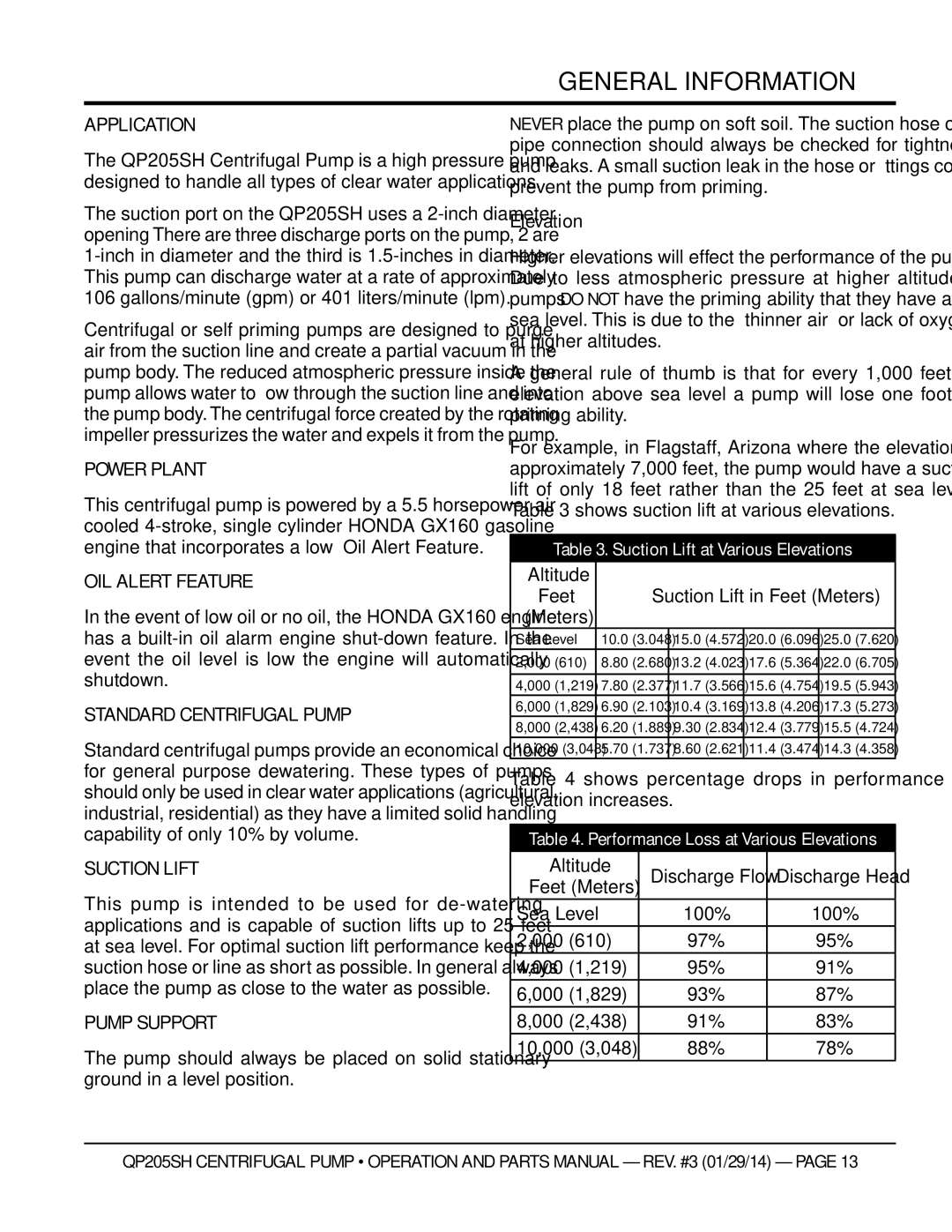QP205SH specifications
The Honda Power Equipment QP205SH is a powerful and versatile portable generator designed for both residential and commercial use. This generator is renowned for its reliability, efficient performance, and user-friendly features, making it an ideal choice for a wide range of applications, from powering tools on job sites to providing backup electricity during outages at home.At the heart of the QP205SH is a robust Honda GX160 engine, known for its longevity and fuel efficiency. This 163cc four-stroke engine delivers a maximum output of 2,000 watts, ensuring that it can handle most household appliances and power tools without a hitch. The generator is equipped with a low-oil shutdown feature, which automatically turns off the engine when oil levels become critically low, preventing potential damage and extending the life of the unit.
One of the standout features of the QP205SH is its advanced inverter technology. This technology provides clean and stable power, making it safe for sensitive electronics such as laptops and smartphones. The inverter system also reduces fuel consumption, allowing for extended run times on a single tank of gas. The generator boasts up to 8.1 hours of continuous operation at half load, which is particularly beneficial for extended use during power outages or while camping.
Portability is another key characteristic of the QP205SH. Weighing in at just 46 pounds, the generator is lightweight and equipped with a convenient handle, making it easy to transport to various locations. The compact design ensures that it can fit in tight spaces, whether it's in the back of a vehicle or tucked away in a storage shed.
The QP205SH features multiple outlets, including two 120V household outlets and one 12V DC output for battery charging. This versatility allows users to connect and power multiple devices simultaneously. The generator also comes with a noise-dampening design that keeps operational sound to a minimum, ensuring that it doesn’t disturb the peace in residential areas or during outdoor activities.
In summary, the Honda QP205SH portable generator is a stellar option for anyone in need of reliable, efficient power. With its durable engine, inverter technology, portability, and user-friendly features, it stands out as a top choice for both home and professional use. Whether you’re preparing for an emergency or simply need extra power for outdoor events, the QP205SH is equipped to meet your needs.

